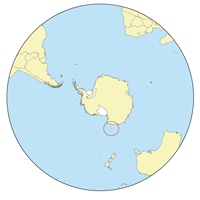| Brown Peak | |
|---|---|
| Highest point | |
| Elevation | 1,705 m (5,594 ft) [1] |
| Prominence | 1,705 m (5,594 ft) [1] |
| Listing | Ultra Ribu |
| Coordinates | 67°41′S164°58′E / 67.683°S 164.967°E [1] |
| Geography | |
| Location | Sturge Island, Balleny Islands, East Antarctica |
| Geology | |
| Mountain type | Stratovolcano |
| Last eruption | Unknown [2] |


Brown Peak is a stratovolcano and the highest point of the Balleny Islands. It is situated on the northern part of Sturge Island. Recent research suggests this may be as high as 2170m. [3]
